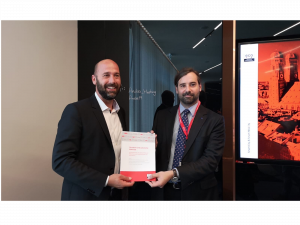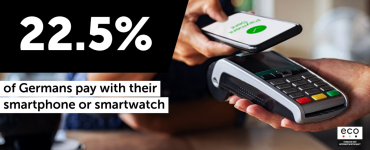- The Internet industry has published guidelines on “Connected and Autonomous Mobility” with analyses and recommendations for action for the automotive industry
- eco Association calls on EU Parliament to set 5G as standard for connected driving in addition to Wi-Fi on 14 June 2019
With the guidelines on “Connected and Autonomous Mobility”, eco – Association of the Internet Industry supports the automotive industry with immediate effect in bringing the self-driving car onto the road with cyber security, data protection, and well-defined areas of responsibility and liability. “Our goal is to interlock the automotive industry even more closely with the Internet industry,” says eco’s Managing Director Alexander Rabe. In six chapters, the guidelines deal in detail with the data exchange of connected and automated vehicles, the necessary cyber security, and data protection issues, as well as warranty and liability law. The articles are written by technical experts and specialized lawyers.
The Internet as the key to the connected mobility of the future
Mobility is changing, the self-driving car is coming, and will help the traffic of the future flow faster. Using the best route and taking all modes of transport into account, mobility apps enable customers to reach their destinations ever faster and more conveniently. In order to build and establish the necessary digital infrastructure, a strong Internet industry is needed whose companies will play a more important role in the mobility ecosystem in the future. “The guide is intended to contribute to answering the numerous legal and technical questions that arise as a result,” says Rabe.
More and more vehicles will exchange enormous amounts of data, either with each other or in interaction with traffic lights, signs, or the road itself. Due to the many interfaces and radio transmissions, more and more cars are becoming part of the Internet of Things (IoT). This also creates a number of new challenges. “Intelligent security concepts must be considered from the outset in order to reliably protect vehicles from attacks via the Internet,” says Rabe. Regular updates are essential in order to react to new threats and to ensure the security of a system on an ongoing basis.
Data protection made in Europe sets international standards
A central challenge on the way to the self-driving car is data protection, which manufacturers should already take into account during software development. The focus here is on data processing in the car for maintenance, route planning, location/position, and speed, as well as information on driving behavior, the entertainment system and, last but not least, the information recorded by the vehicle’s sensors: “The exchange of data and the right to process personal data are subject to the clear rules of the GDPR,” says Rabe.
“We must provide the best possible protection for mobility against attacks by cyber criminals and establish internationally compatible standards for data protection based on the digital single market, and implement them uniformly,” said Alexander Rabe. “If we take this to heart and at the same time create efficient digital infrastructures – for example with 5G technology, strengthening the data center landscape, and developing edge computing – we will succeed in making mobility more comfortable, faster, and more secure.”
Against the background of the findings of the white paper “Connected and Autonomous Mobility”, the eco Association takes a critical view of the EU Parliament’s intention to focus exclusively on Wi-Fi as the networking technology for connected driving, in a vote on 14 June. “The future viability and the performance capability of 5G for the mobility of the future must be taken into account by the EU Parliament in its decision,” says Rabe.
The full guidelines on “Connected and Autonomous Mobility” is available for free to download.




